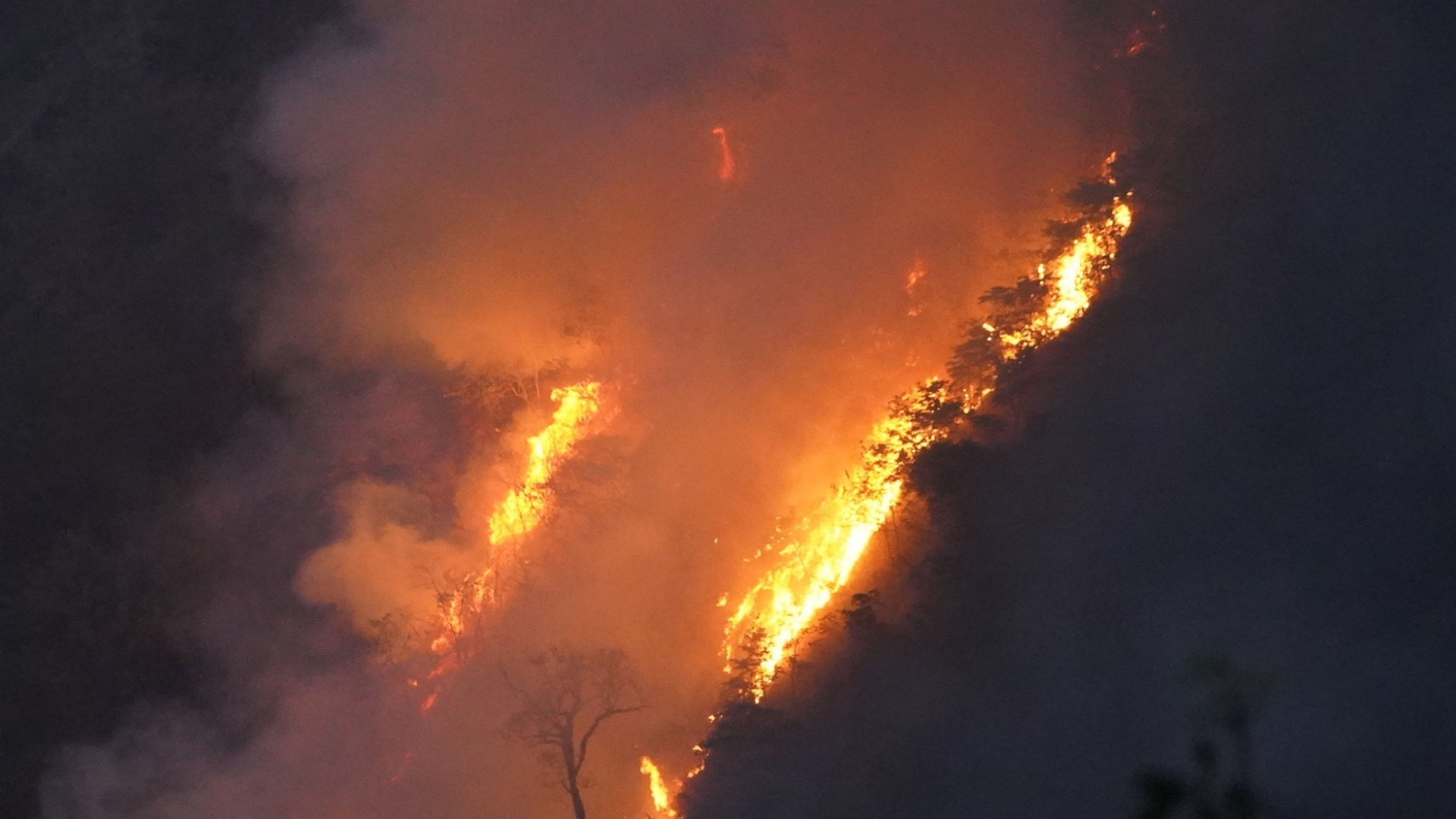Loss Risk | Increasing Wildfire | Carbon Reserve | Biodiversity | Protected Areas

As Nepal prepares to upscale carbon trading utilising its forests, and incentivise clean energy projects with sustainability and investment opportunities, a rising threat looms over.
A recent study has revealed alarming trends in wildfire susceptibility across the country, fueled by changing weather patterns, land use shifts, and human activities. As climate-exacerbated wildfires intensify, they endanger the country’s carbon reserves and biodiversity.
If current wildfire trends persist, Nepal is likely to lose over 495 million tonnes of carbon — including 170 million tonnes of soil organic carbon and 325 million tonnes of above ground wood carbon, suggests the study, published in Information Geography.
Moreover, wildfires also threaten key biodiversity hotspots — protected areas like Chitwan and Bardiya National Parks, home to species such as the Royal Bengal tiger and the one-horned rhinoceros.
The research mapped fire susceptibility across Nepal’s diverse terrains devising machine learning models and Earth observation data.
Provinces like Lumbini, Madhesh, and Sudurpaschim have experienced a concerning rise in wildfire risks over the past two decades while Koshi showed a general decrease, say the findings.
This trend is especially evident in areas with dense forest cover, where increasing temperatures, prolonged dry spells, and human activities have created the perfect conditions for devastating fires.
The research studied nationwide wildfire data into four sub-decades — 2001-2005, 2006-2010, 2011-2015, and 2016-2020. The wildfire susceptibility was predicted on a scale of 0–100, with higher values indicating a greater susceptibility to wildfires.
In Bagmati, Chitwan consistently had the highest susceptibility throughout the years, with a peak in 2011–2015 (60.69). Makawanpur and Dhading had increasing susceptibility trends, while Kavrepalanchok had an increase in susceptibility from 17.12 in 2001–2005 to 31.56 in 2016–2020.
The study highlights the increased road proximity in these areas introduced more human activity and ignition sources into the forested regions. Additionally, the rise in population fuels urban development and rural to urban migration, resulting in fallow land and increased forest cover and fuel.
According to the findings, Lamjung in Gandaki, Surkhet in Karnali, Parsa in Madhesh, and Kanchanpur and Kailali of Sudurpaschim displayed a threatening increase in susceptibility.
Meanwhile in Lumbini, Banke and Kapilvastu showed increasing trends and Arghakhanchi experienced a steady increase throughout the years. This increased wildfire susceptibility is likely to put medicinal herbs worth millions and wildlife at risk, highlights the study.
The study outlined that regions with higher susceptibility to wildfires generally hold less carbon in the soil. Also, areas with higher susceptibility may contain more mature or denser forests, possibly due to a history of selective adaptation or resilience to fires, leading to higher above-ground carbon content.
Wildfires usually peak during the pre monsoon season between March and May in Nepal, particularly in the Terai lowlands and hilly regions.
In 2016 alone, wildfires destroyed approximately 220,000 hectares of forest. The situation worsened in 2021, when the country witnessed an unprecedented wildfire season.
The smoke from these fires significantly impacts air quality, particularly in Kathmandu which climbs up the global pollution chart as wildfires intensify, exacerbating respiratory illnesses and disrupting flights.
The study emphasises the urgent need for fire management strategies, including early warning systems, sustainable land use practices, community-based interventions, and climate-resilient policies to protect both forests and local populations.
As of now, Nepal risks losing not only its carbon storage capacity and ecological richness but also its future carbon sequestration potential, which may be critical for climate change mitigation efforts.
Read More Stories
Kathmandu’s decay: From glorious past to ominous future
Kathmandu: The legend and the legacy Legend about Kathmandus evolution holds that the...
Kathmandu - A crumbling valley!
Valleys and cities should be young, vibrant, inspiring and full of hopes with...
Consumer Court rulings spark nationwide doctors’ strike
Doctors across Nepal suspended all non-emergency medical services on Monday in protest against...